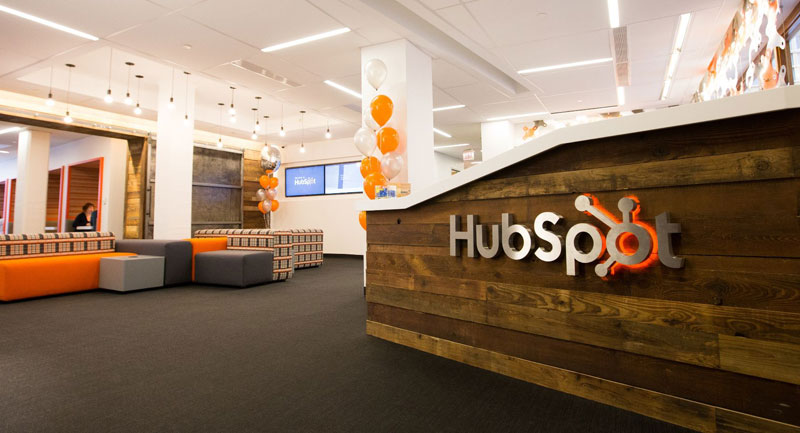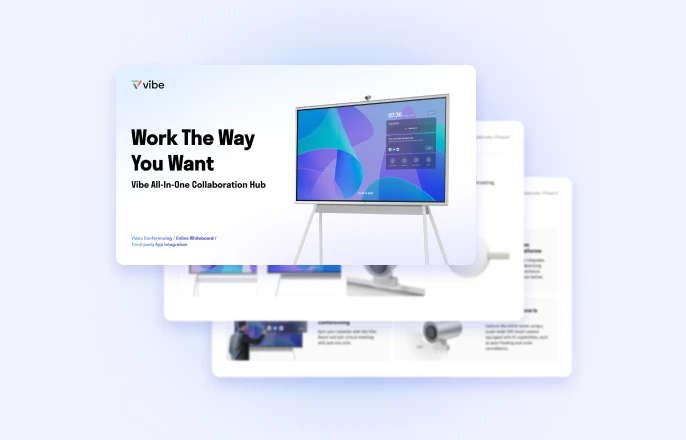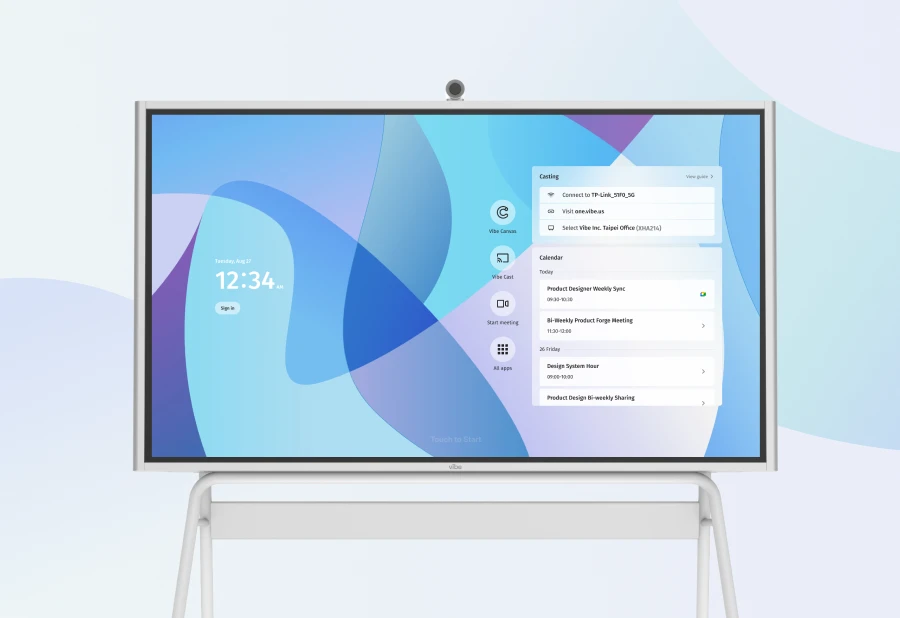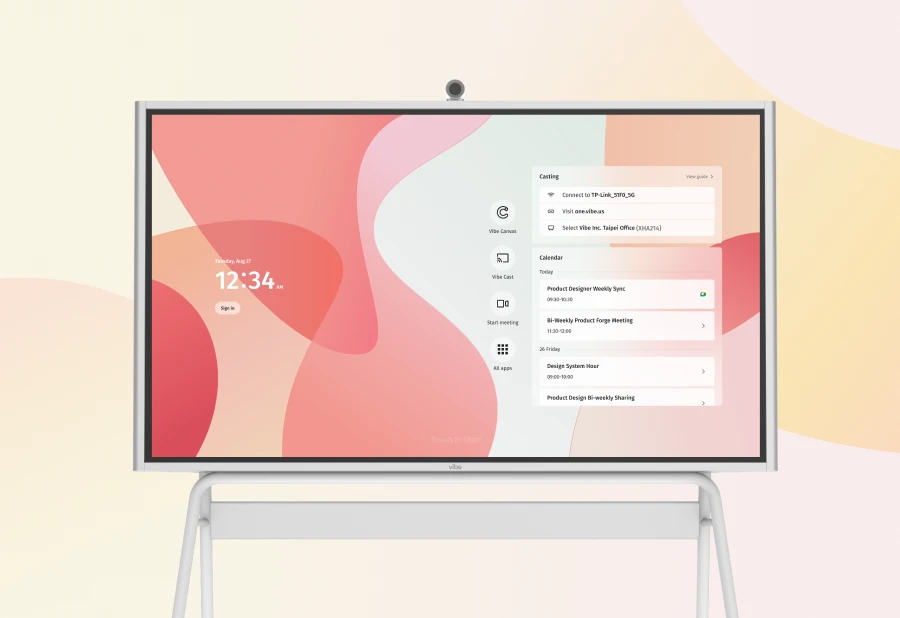The shift to remote collaboration has presented many unique challenges. But on the bright side, it has also been an eye-opening experience for millions of traditional office workers. The realization that so many jobs can be done well from nearly anywhere has expanded the possibility of offering flexible work options and giving employees more freedom in how to structure the workweek.
Not every company can transition to being 100% remote, but many can shift to being remote-first. Designing a remote-first workplace involves more than your team taking their laptops home at the end of the day. Critical evaluation, thoughtful planning, and creative solutions are necessary to creating long-term success.
Read on to see what changes your company can make to offer a more accommodating work situation to your employees.

Remote-first vs. remote-friendly: what’s the difference?
First, it’s important to recognize the difference between offering the option to work from home on occasion and making work-from-home (or WFH) the first and foremost option. In other words, will your company be remote-first, or remote-friendly?
-
Remote-friendly Companies
Chances are you’re already familiar with remote-friendly companies. In this kind of company, the option to work remotely is available, but on an as-needed basis. Working from home might be limited to certain days of the week, specific teams, or only under certain circumstances. The expectation is that employees will still report to the office most days. Essentially, WFH is more of a perk than a standard operating procedure.
-
Remote-first Companies
Being a remote-first company means team members can work from anywhere—whether that’s a central office, at home, a coffee shop, etc.—and have the same work experience. They can communicate easily, access the same files, and complete the same projects with no disadvantage to choosing a different workspace.
At Vibe, we’re a remote-first team located in multiple cities on two continents. Like many fully remote and remote-first teams, we’ve found that with reliable collaborative apps and services, this kind of work situation is more possible now than ever before.
Examples of remote-first companies
-
Real Estate Company-Zillow
Online real estate company Zillow admits that their leadership was resistant to moving to a work-from-home setup for a long time. Dan Spaulding, Zillow’s Chief People Officer, attributes this resistance to the decades-long practice of what many Americans consider to be a typical workday.
In an interview with CNN Business, Spaulding said of Zillow’s leadership, "They’d been in that rhythm for 10, 20, 30 years of our professional careers and I think there was a belief, that wasn’t just isolated to us, that if people weren’t in the office that they were doing something else, and maybe that something else was not being focused on their role."

-
Marketing Platform-HubSpot
In August 2020, the digital marketing platform HubSpot announced plans to offer its employees three different work options. As of 2021, employees can choose to work in the office most days of the week; part-time at the office and part-time at home; or from home most days of the week.

-
Other Major Companies
To the company’s surprise, however, employees were just as productive and more connected than ever. The change was such a success that three months after the initial switch, Zillow announced they were offering around 90 percent of their employees the option to work from home indefinitely. Other major companies like REI, Reddit, and Google have gone in the same direction or are exploring ways to be more remote-forward in the future.
Why should consider going remote-first?
A company’s ability to be an effective remote-first workplace does depend on the industry. (Retail workers, restaurant employees, and maintenance professionals immediately come to mind.) And if your company has always relied heavily on face-to-face conversations (such as real estate agencies or any human resources department), it might be hard to imagine how to evolve your practices.
But consider how a wide range of medical offices now offers telehealth appointments. Or how major corporations have started onboarding new hires completely through online portals. Think of the schools that have quickly adapted to offering hybrid or 100 percent online education. You might be surprised by how many jobs can be successfully completed from outside the office.
 A woman working for a remote-first company takes a call while working in her home office.
A woman working for a remote-first company takes a call while working in her home office.Related: How to Make Different Management Styles Work for Remote Teams
Turning traditional office practices into remote-first strategies
Every company will have its own unique set of circumstances to evaluate when making the move to remote. However, these areas are a good place to start developing guidelines and strategies.
Develop a communications system to keep employees informed
Today’s companies use a combination of synchronous and asynchronous communication throughout the day. In traditional office environments where most employees are on-site every weekday from 9-5, synchronous communication is likely the default. This means quick email responses, in-person meetings, dropping by a co-worker’s office, or unscheduled chats in the break room.
While synchronous communication still has its place in a remote-first company, the focus should shift to developing an asynchronous system that team members can rely on as their go-to option for office communications.
The asynchronous toolkit should be robust enough to keep every employee, regardless of location, fully informed and reachable as needed. This means using applications that allow for (but aren’t limited to):
-
the easy exchange of large files
-
meeting recordings and transcription
-
team chats with searchable histories
Communication needs will vary between departments. Take the time to gather input from your team and be open to testing different platforms.

Technology and office equipment
Remote teams rely heavily on technology to collaborate and communicate with coworkers. This means that WFH plans must include a focus on equipping team members with tech that works. This ranges from providing adequate equipment to ensuring reliable internet connections to evaluating data security.
Going back to our HubSpot example, the company clearly outlines what employees can expect in the three different work scenarios. For the team members who work from home, "HubSpot makes sure your WFH set-up is safe, sound, and sets you up for success."
In addition to having the technology to ensure success, employees who primarily work outside the office could also benefit from a home office stipend, since they won’t have regular access to on-site supplies. This can be used to purchase a desk chair, printer, paper supplies, and other must-haves.
 Workplace flexibility supports working parents and other caregivers.
Workplace flexibility supports working parents and other caregivers.Have a plan for child care and caregiver assistance
If the current WFH boom has taught us anything, it’s the value of access to quality child care and other caregiving options. There are many larger companies that offer on-site child care, so providing a stipend or child care program to employees who work off-site is key to being a truly remote-first company.
Additionally, you might have employees who are primary caregivers for elderly parents or relatives, so it’s worth considering a general caregiving budget to help them in this area of life.
Budget for stipends to replace traditional in-office perks
If you have employees who need to work away from the office and won’t have access to company-provided equipment or supplies, offering a stipend to complete their home office gives them the best opportunity to create a productive and inspiring workspace. This kind of assistance could also go toward paying for a co-working space closer to the employee’s home.
Are your employees accustomed to having access to an exercise room, workout equipment, or on-site fitness classes? Then look into offering a health and wellness stipend to replace those perks.
Have on-site spend a week working remotely
With the ability to work from anywhere, you will inevitably have employees who work best at the office. To help them get a sense of how to communicate and what challenges might arise for the remote workers, have them spend a week working remotely, whether at their home or at a co-working space.
And if possible, remote workers should be encouraged to spend some time on-site as well. In both cases, your employees can benefit from the insight that comes from experiencing what a typical day is like for their co-workers in various situations.
Determining compensation and vacation time
Allowing employees to choose where they work best will have an effect on how "office hours" are tracked. Will you have people log in to a time management app? Or will it be enough to ask them to be available during certain times? Will output be used to determine if people are doing what is expected?
Time tracking will factor into compensation decisions as well. When people can work from anywhere, what is the best way to decide a position’s salary? It could be based on where company headquarters are located, the average rate in whichever city the employee is living in, or a combination of other factors.
The location also comes into play when determining vacation time. Doist, a completely remote company, has a global team. In their case, setting a standard holiday calendar didn’t make much sense. To accommodate the many beliefs, practices, and time zones represented among their employees, they found that offering 40 vacation days to every employee simplified the increasingly complicated vacation-days situation. Creative solutions like this accommodate every member of the team, regardless of where they work.
 Two co-workers high-five during a hybrid team outing with their remote-first company.
Two co-workers high-five during a hybrid team outing with their remote-first company.Adopt a remote-first mindset
Establishing remote-first practices gives your team the flexibility to work where they can be the most focused and productive. For some people, this might still be at the office. But having more options gives your team members the ability to care for their family, their work team, and themselves.
Living and working through a pandemic requires changes that were unimaginable even just five years ago. For companies hoping to sustain the business or even thrive during this time, there is no more business as usual. Instead, they’ll need to overhaul how their teams work together not only in the coming months but further in the future. And that overhaul starts with a remote-first mentality. Learn how Vibe can help you achieve your remote-first goals by requesting a demo.
Vibe offers a collaborative solution combining an interactive digital whiteboard and innovative smart software. Increase engagement and efficiency at your brainstorming sessions, virtual training, and classroom sessions by integrating your favorite applications with video conferencing and an infinite, mess-free writing canvas. Collaborate today with Vibe.
Looking for the latest in interactive whiteboard technology? Check out Vibe today!










-1sbltxxq4FYxHrXrwJVLsCDNsXpqNa.webp)
-5Zp0pmSytvcuYDVs1LvuwplKuRneK0.webp)
